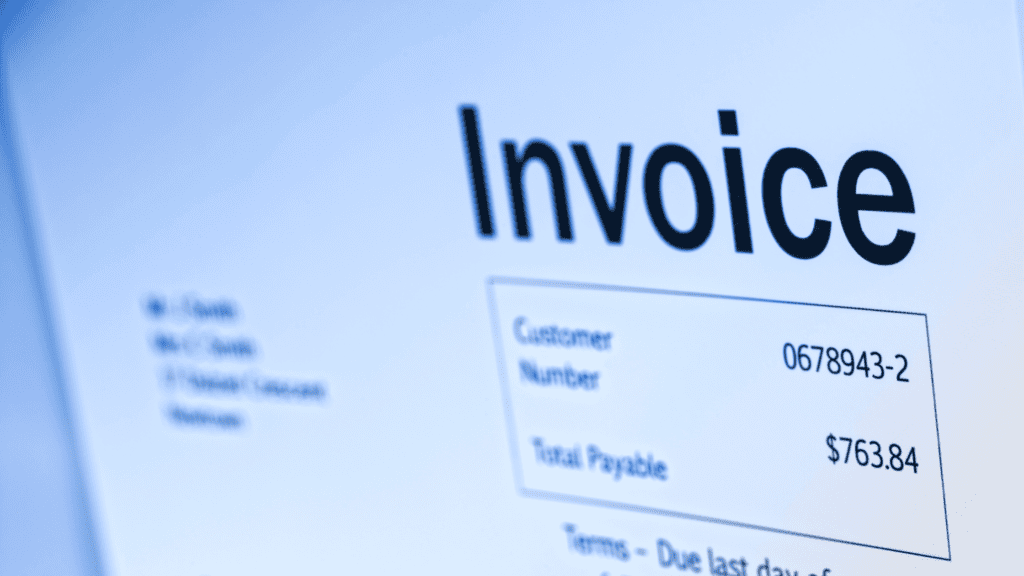Invoicing 101: How to write an Invoice in Australia

An invoice is a crucial tool for any small business owner, whether you’re just starting out or running a large enterprise knowing how to write an invoice is priceless. It’s the record of goods and services provided to your customers, and being able to produce accurate invoices quickly and easily will make your life easier when it comes to tax time.
When creating an invoice template, there are a few things you need to include such as; all relevant business details, ensuring relevant customer details are included, itemizing your goods and services correctly, ensuring your payment terms are correct, including a signature, and ensuring your business has a strong system to deal with business cashflow. Here’s our step-by-step guide on how to write an invoice for Australian businesses.
Download Our Valid Tax Invoice Template
Don’t want to spend time learning how to write an invoice and want a quick solution? Looking for an easy business template that is professional, easy to use, and will fit your needs? Click the link below to download our free invoice template, and let us know what you think!
1. Get Your Details Right
The first step when you sit down to write an invoice is to make sure all your contact details are correct. You need to include your full business name, address, phone number, email address, and website URL (if applicable). This ensures that the customer knows who they are paying and can reach out if there are any issues.
If you have an ABN (Australian Business Number), it needs to be included as well. Including an invoice number will help you keep track of invoiced over time and ensures you’re organised when it comes time to report to the Australian taxation office.
How to create an invoice number
Having an effective invoice numbering system is crucial to the organisation of financial records. Your numbering system can help you track down past invoices quickly.
There are many approaches to coming up with a unique invoice number, but one way is by using sequential numbers for each bill (for example, INV00001) when it gets closer to tax time, it might be more convenient to have invoices organised with dates at the start of each number instead – so all future reminders about payments or purchases will be easy to set up or re-check due to the date.
One way is by using sequential numbers for each bill (for example, INV00001) and including the date at the start of every new series in order: 2023-01; INV0008. Additionally, you may want to include a customer code or number to further add items that will make the invoice easily identifiable.
2. Include Customer Details
Creating effective tax invoices means you also need to include the customer’s information – their name and contact details so you can get paid. When you write an invoice, make sure these details are clear and easy to read, as incorrect contact information could cause payment delays down the track.
3. Itemise Goods & Services Provided
Invoices should clearly list each item that was sold or service that was provided along with the quantity, cost per unit, and total cost (including Goods and services tax). If you’re providing goods or services in instalments over several weeks or months, make sure this is noted on the invoice, too so there is no confusion later on!
4. Invoice date & Payment Terms
It’s important to include payment terms for each individual invoice – such as ‘14 days from invoice date – along with a due date for payment so customers know exactly when payment needs to be made without having to call up or email you for clarification. This helps ensure timely payments, which benefit both parties involved!
5. Add Your Signature
Finally, add your signature at the bottom of the invoice before sending it off! This acts as confirmation that all goods/services have been delivered as promised and confirms that payment is due by the specified due date noted on the invoice itself.
6. Systemising your Invoicing Process
Invoicing can be one of your business’s greatest assets or a complete headache. Having a bookkeeper is essential for any small business; they can take away the stress and give back the time spent dealing with invoices and business finance. They provide valuable assistance in managing finances and ensuring that your business remains compliant.
They are well-versed in the latest accounting regulations and can help you save money by adhering to the necessary rules. Bookkeepers work quickly and efficiently to ensure that invoices are sent out on time. Shoebox Books are experts at invoicing and all areas of business accounting and taxation. Get in touch with our team today to find out how you can benefit from a strong financial team behind your business.
Getting the simple invoice right is powerful.
Knowing how to write an invoice means your invoices will be clear, concise, and accurate; it should also provide all relevant details such as customer name/contact info, an itemised list of goods/services provided with pricing breakdowns (including GST), payment terms & due date and finally your signature at the bottom confirming everything has been delivered accordingly. By following these steps, you can ensure your invoicing process runs smoothly without any hiccups along the way!
If needed, look into using online invoice software solutions such as Xero, which makes creating professional invoices quick and easy for small business owners in Australia. However, accounting software may not always meet your requirements. At the end of the day, there’s no replacement for the human touch; the team at Shoebox Books will be there every step of the way to ensure your business is in peak financial fighting fitness at all times. Get in touch with us today!